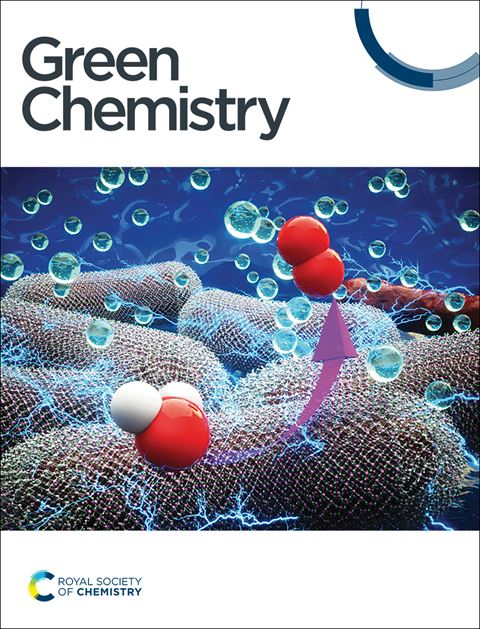Functional group boosting triazine ring-opening for low-temperature synthesis of heptazine-based graphitic carbon nitride†
IF 9.3
1区 化学
Q1 CHEMISTRY, MULTIDISCIPLINARY
引用次数: 0
Abstract
Graphitic carbon nitride (g-CN) is a promising semiconductor material with diverse applications. It is typically synthesized by thermally polymerizing nitrogen–carbon precursors, like melamine or urea, at elevated temperatures (typically ∼550 °C). However, the high energy consumption associated with these methods poses challenges for scalable and sustainable production. Here we develop a functional group engineering to boost the thermal polymerization reaction to produce g-CN at low temperature. When the functional groups phenyl (–Ph), methyl (–CH3), and chlorine (–Cl) substitute the amino (–NH2) group in melamine, the electron density in the triazine ring decreases progressively due to the electron-donating/withdrawing effect. Therefore, the bond energy of –CN– and the stability of the triazine unit would be weakened, consequently boosting the ring-opening reaction. Multiple structural characterization processes confirm that as the withdrawing ability of the functional group increases, the synthesis temperatures of g-CN reduce from about 550 to 300 °C. Our work provides new insights and practical strategies for the sustainable, low-energy synthesis of g-CN, advancing its potential for broader applications.

求助全文
约1分钟内获得全文
求助全文
来源期刊

Green Chemistry
化学-化学综合
CiteScore
16.10
自引率
7.10%
发文量
677
审稿时长
1.4 months
期刊介绍:
Green Chemistry is a journal that provides a unique forum for the publication of innovative research on the development of alternative green and sustainable technologies. The scope of Green Chemistry is based on the definition proposed by Anastas and Warner (Green Chemistry: Theory and Practice, P T Anastas and J C Warner, Oxford University Press, Oxford, 1998), which defines green chemistry as the utilisation of a set of principles that reduces or eliminates the use or generation of hazardous substances in the design, manufacture and application of chemical products. Green Chemistry aims to reduce the environmental impact of the chemical enterprise by developing a technology base that is inherently non-toxic to living things and the environment. The journal welcomes submissions on all aspects of research relating to this endeavor and publishes original and significant cutting-edge research that is likely to be of wide general appeal. For a work to be published, it must present a significant advance in green chemistry, including a comparison with existing methods and a demonstration of advantages over those methods.
 求助内容:
求助内容: 应助结果提醒方式:
应助结果提醒方式:


